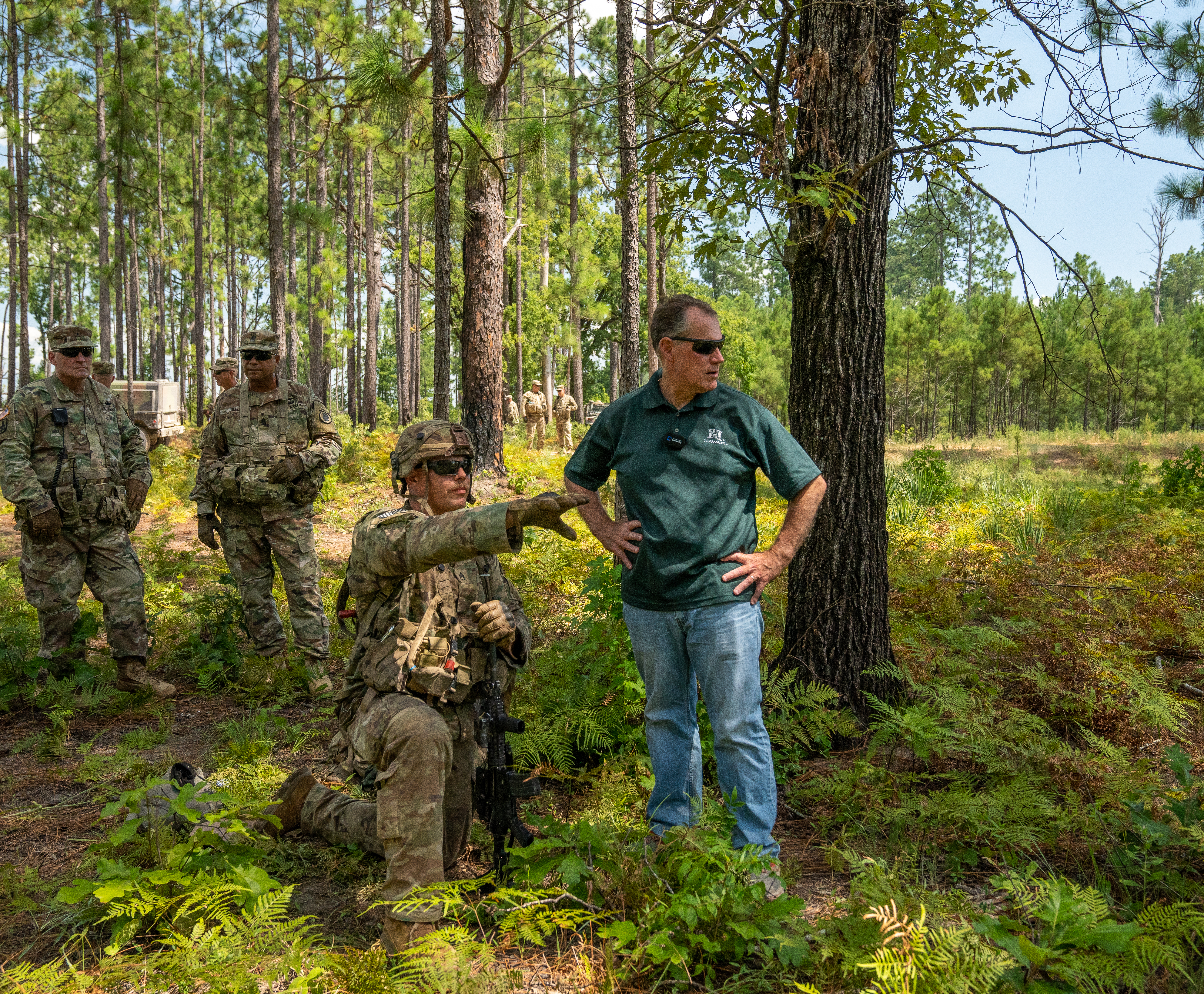
Ensuring our national defense is one of my most important responsibilities. I am dedicated to assuring that our armed services have all that they need to protect our citizens and preserve our liberties.
As a member of the House Appropriations Subcommittee on Defense, I am deeply involved in the oversight of our military and providing adequate funding of our armed forces. The 2022 National Defense Strategy prioritizes deterrence against China and ensuring a free and open Indo-Pacific. This is critical not just for our country, but for our Hawai‘i which is the center of our defense efforts in the vast Indo-Pacific. Through my Appropriations Committee and otherwise, I am focused on supporting Hawaii’s military installations, ensuring our servicemembers have all the training and equipment they need to fulfill their missions, and assuring a good quality of life for them and their families.
Supporting Hawaii’s Military Installations
Military installations in Hawai‘i play a crucial role in keeping the U.S. safe and protecting our national interests worldwide, especially given the shift in our national security strategies and resources to the Indo-Pacific. The First Congressional District of Hawai‘i alone includes many major military facilities, including Joint Base Pearl Harbor-Hickam, Fort Shafter, Camp H.M. Smith, Tripler Medical Center Army Base and Fort DeRussy. It is also the home of U.S. Indo-Pacific Command, U.S. Pacific Fleet, U.S. Marine Forces Pacific, U.S. Army Pacific, U.S. Pacific Air Forces, Space Force Indo-Pacific and Special Operations Command Pacific. These military facilities and commands directly employ approximately 61,000 active duty personnel, civilians and contractors. Statewide, the direct and indirect impacts of military expenditures generate nearly $15 billion in Hawaii’s economy, creating more than 100,000 jobs for those who live in our islands.
Maintaining a Capable Military
For our military to remain the best in the world, it must have up-to-date equipment and state-of-the-art technology. I am committed to making the investments needed to defend our nation against evolving threats and prepare for future challenges. This especially includes programs and organizations that are closely linked to our Hawai‘i, such as the Hawai‘i National Guard and the research programs conducted by high-tech businesses and universities in Hawai‘i.
Caring for Military Personnel and Their Families
We must ensure that our Armed Forces remain the finest in the world, which begins with investing in our servicemembers and supporting their families. I have supported pay increases for our troops and improving their benefits.
In addition, I am committed to ensuring that when we deploy our troops, they know we will care for their spouses and children. Through my Appropriations Committee, I have conducted oversight over the Department of Defense’s management of military housing and other activities throughout Hawai’i, our country and overseas. I have also advocated for and was able to secure $2 billion in Fiscal Year 2024 to fund the construction, operation and maintenance of family housing projects. The additional funds above the initial budget request helped address long-standing issues affecting our servicemembers’ quality of life.
Community Ties

While focused on providing the military with the resources they require, I am committed to ensuring the Department of Defense continues to be good partners in our Hawai‘i. To that end, I secured $5 million to enable the U.S. Indo-Pacific Command’s Community Engagement Initiative, focused on strengthening ties between the military and local community.
In addition, in Fiscal Year 2024 I helped secure $410 million for the Navy’s Environmental Restoration Program to remediate per- and polyfluoroalkyl (PFAS) contamination. I also helped secure $232 million for environmental restoration of Formerly Used Defense Sites and $200 million for the Readiness and Environmental Protection Initiative. These programs are essential in remediating contaminated land as well as protecting lands, avoiding land use conflicts near military installations and increasing resilience to climate change.


 While focused on providing the military with the resources they require, I am committed to ensuring the Department of Defense continues to be good partners in our Hawai‘i. To that end, I secured $5 million to enable the U.S. Indo-Pacific Command’s Community Engagement Initiative, focused on strengthening ties between the military and local community.
While focused on providing the military with the resources they require, I am committed to ensuring the Department of Defense continues to be good partners in our Hawai‘i. To that end, I secured $5 million to enable the U.S. Indo-Pacific Command’s Community Engagement Initiative, focused on strengthening ties between the military and local community. 